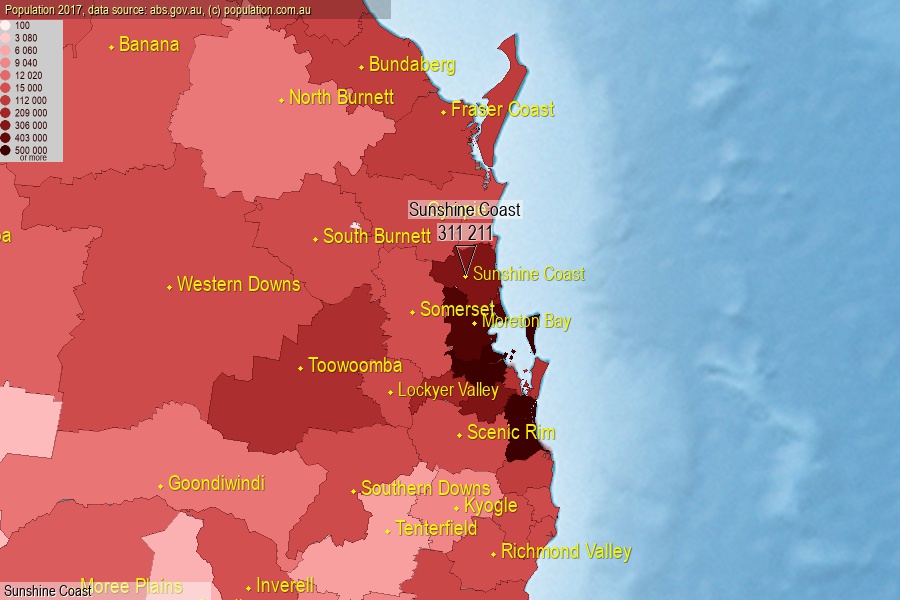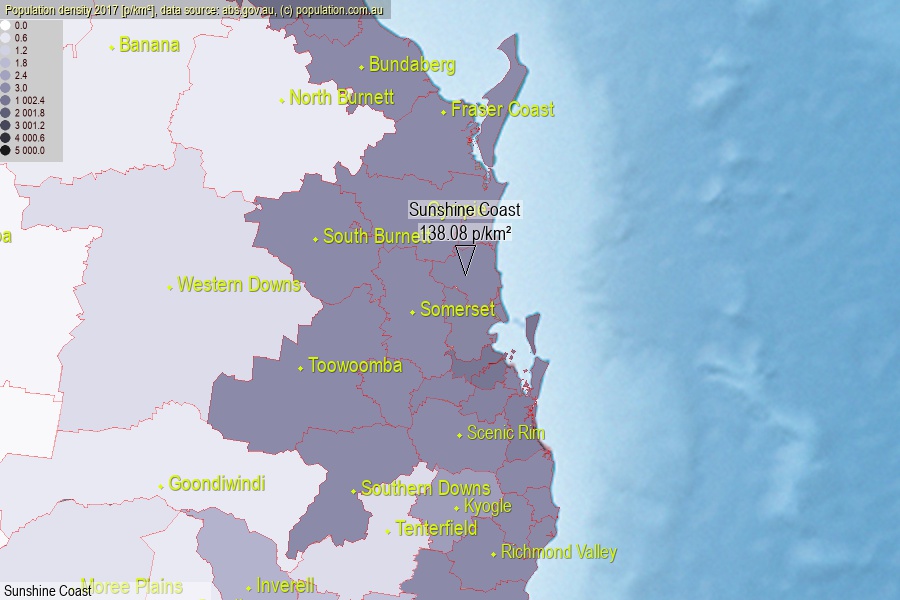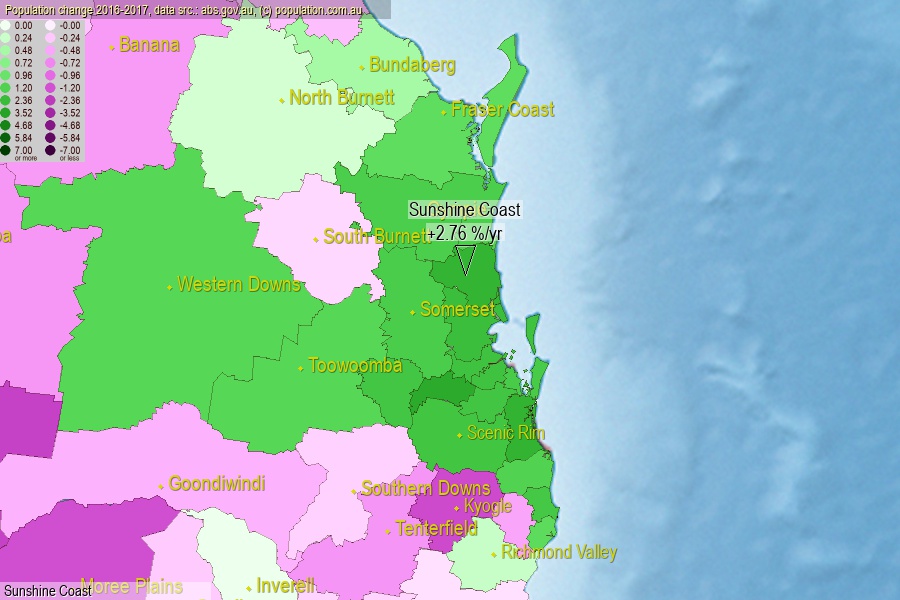 population.com.au
population.com.auLast official estimated population of Sunshine Coast Regional Council (as Local Government Area) was 311 211 people (on 2017-06-30)[2]. This was 1.26% of total Australian population and 6.236% of QLD population. Area of Sunshine Coast is 2 253.90 km², in this year population density was 138.08 p/km² . If population growth rate would be same as in period 2016-2017 (+2.76%/yr), Sunshine Coast population in 2025 would be 387 059. [0]



Click to enlarge. Sunshine Coast is located in the center of the images.
Population [people], population density [p./km²] and population change [%/year] [2]
[2001-2002] +3.44 %/Y
[2002-2003] +4.45 %/Y
[2003-2004] +3.82 %/Y
[2004-2005] +3.15 %/Y
[2005-2006] +2.82 %/Y
[2006-2007] +2.81 %/Y
[2007-2008] +3.08 %/Y
[2008-2009] +2.89 %/Y
[2009-2010] +1.94 %/Y
[2010-2011] +1.59 %/Y
[2011-2012] +2.84 %/Y
[2012-2013] +2.60 %/Y
[2013-2014] +2.37 %/Y
[2014-2015] +2.31 %/Y
[2015-2016] +2.55 %/Y
[2016-2017] +2.76 %/Y
[0] Calculated with linear interpolation from officially estimated population
[1] Read more about LGA and Australian Statistical Geography Standard (ASGS) on abs.gov.au
[2] Population data from Australian Bureau of Statistics (Population and density: 2017; change: 2016-2017)
[3] Digital Boundaries: Australian Statistical Geography Standard (ASGS) 2016.